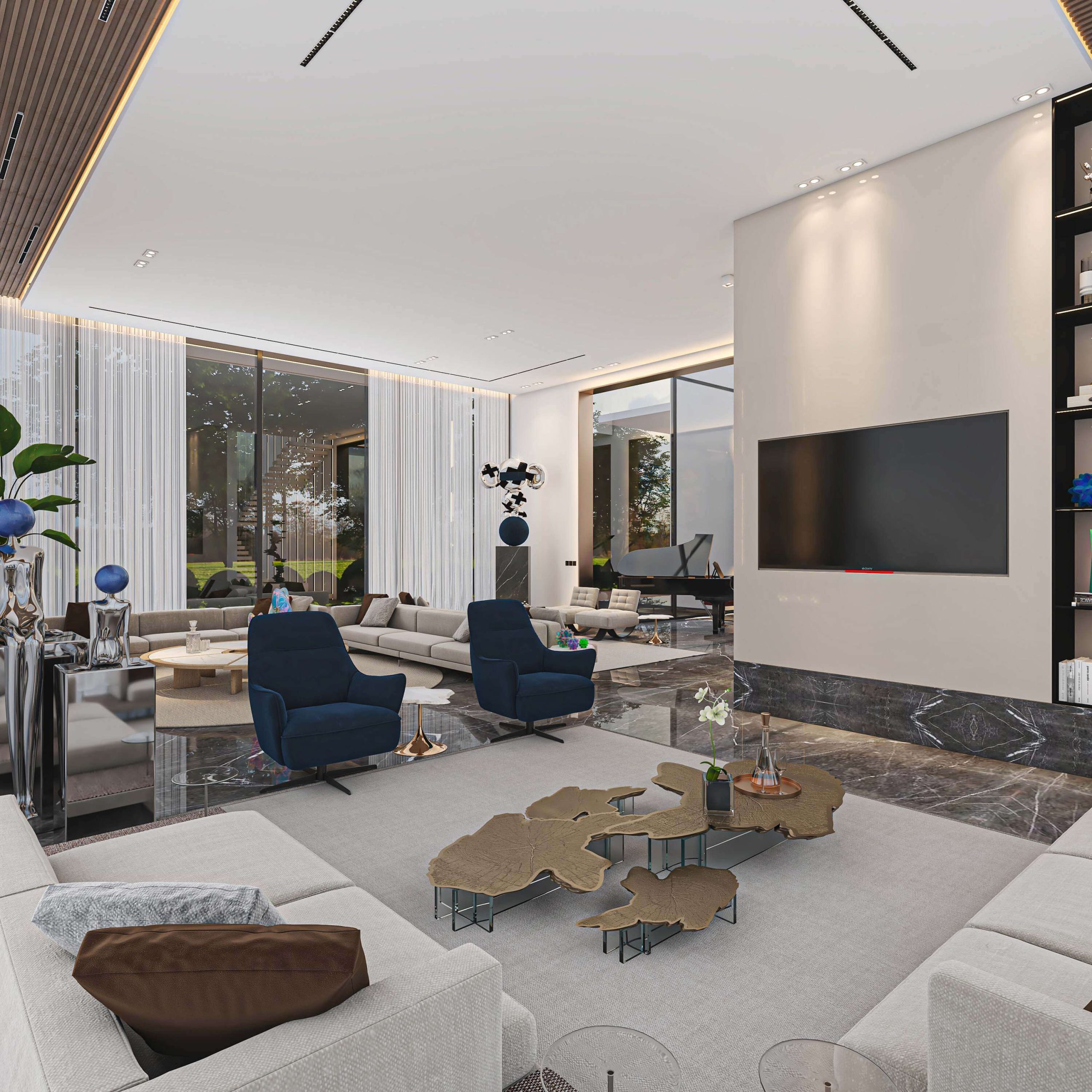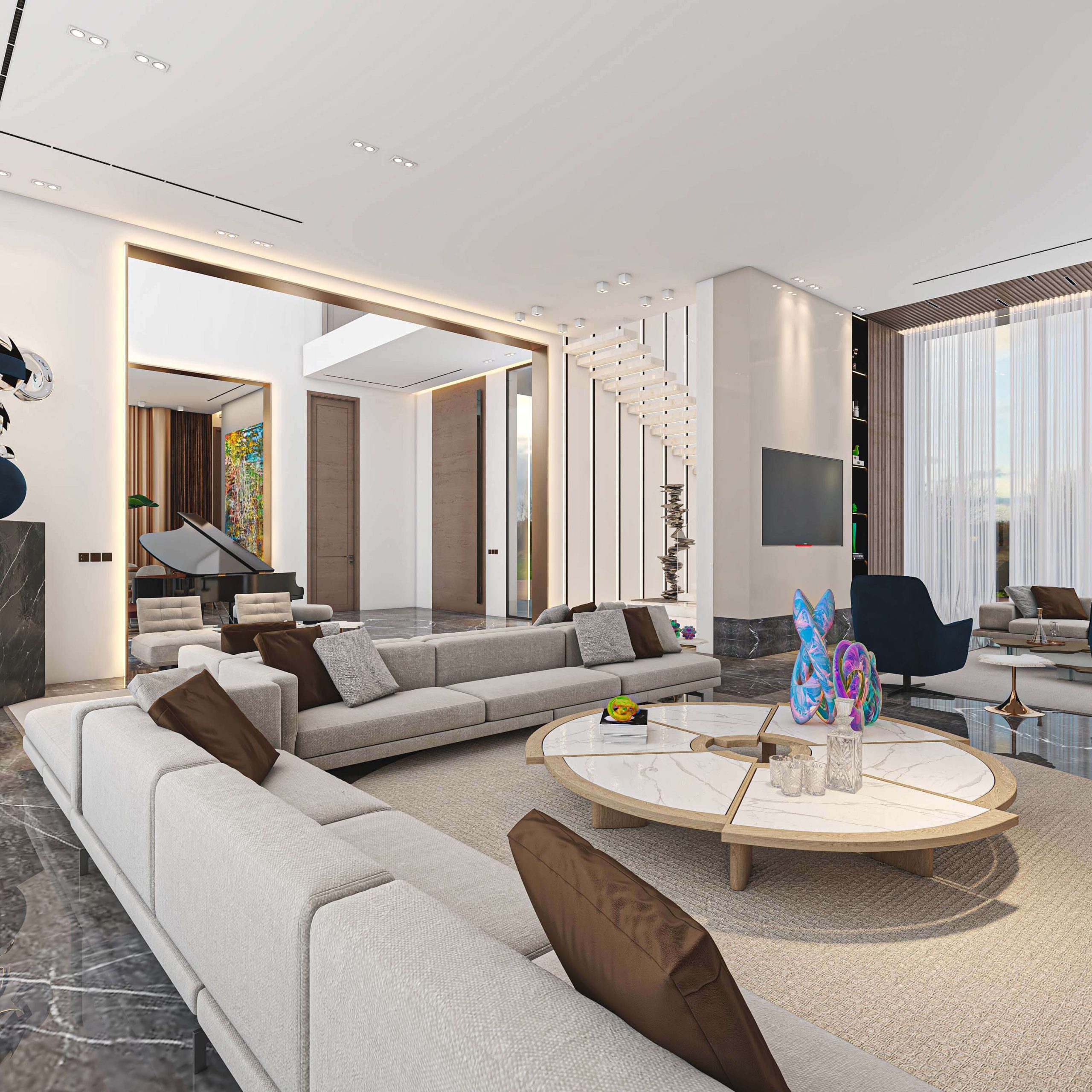Lifestyle
Round, Rectangular, or Ragged: Interior Architect Aly Hammoud and Choosing the Perfect Coffee Table

Saying “yes” to the right coffee table never gets any easier. An essential element of any well-thought-out living room, the choice often comes down to finding the right balance between form and function. Regardless of the designer’s direction with their space, choosing the right coffee table is a critical step toward achieving a cohesive and visually appealing interior design.
Designers must consider several factors when choosing a coffee table. First, the table size should be proportional to the size of the living room. A small coffee table in a large room will look out of place, and a large table in a small room will overwhelm the space. The table’s height is just as important. The ideal height typically falls between 16 and 18 inches, the same as most sofas. A coffee table that is too high or too low will prove uncomfortable for everyday use.

Designers must also consider shape, style, color, material, and space awareness. The table should complement the architecture of the room.
For example, round coffee tables are ideal for square rooms because they create contrast. It’s also important to consider the shape of the furniture, specifically the edges. A round coffee table would be an ideal fit for a living room where the sofa’s edges are also rounded.
The contrast in shapes, however, must be paired with coherence in materials. For example, if the furniture is made from mahogany wood, the table should reflect similar materials and hues. Different materials can be incorporated if the furniture contains metallic elements while considering the room’s overall coherence.
Space awareness is also essential to consider when choosing your coffee table. For instance, rectangular tables fit better in longer and narrower rooms because they don’t take up as much space as round or ragged tables. Suppose your room is spacious and wide enough. In that case, especially if it were an open studio, you can easily fit in round or ragged coffee tables, which are typically more challenging to style and arrange in certain spaces.

Most of the time, the table should match the space’s overall aesthetic. However, mixing elements and styles can help achieve a more dynamic finished product. Consider incorporating a mid-century coffee table in a room with more contemporary pieces or vice versa.
Ragged tables, however, are more sophisticated art pieces. Such tables don’t have a conventional shape, size, color, or edges. They can also have different and unique color patterns that must be mixed and matched professionally with your room’s overall aesthetic.
Of course, you can pick any type of coffee table that suits your needs and preferences in style and aesthetic. You need to make sure, however, that it is the ideal fit for the chosen room, furniture, style, and design. One way to do that is by choosing the right person for the job.

Coffee tables are an essential part of interior architecture. Not only do they function as practical surfaces for drinks and snacks, but they also contribute to the space’s general mood. Interior architects like Aly Hammoud understand coffee tables as powerful tools for tying a room together. They can create a focal point or complement other furniture pieces in the space.
Whether professional or amateur, the right designer should choose the coffee table carefully to ensure it fits seamlessly into the room’s overall design.
Check out Aly Hammoud’s Instagram account for more information.
Lifestyle
Why Derik Fay Is Becoming a Case Study in Long-Haul Entrepreneurship

Entrepreneurship today is often framed in extremes — overnight exits or public flameouts. But a small cohort of operators is being studied for something far less viral: consistency. Among them, Derik Fay has quietly surfaced as a long-term figure whose name appears frequently across sectors, interviews, and editorial mentions — yet whose personal visibility remains relatively limited.
Fay’s career spans more than 20 years and includes work in private investment, business operations, and emerging entertainment ventures. Though many of his companies are not household names, the volume and duration of his activity have made him a subject of interest among business media outlets and founders who study entrepreneurial longevity over fame.
He was born in Westerly, Rhode Island, in 1978, and while much of his early career remains undocumented publicly, recent profiles including recurring features in Forbes — have chronicled his current portfolio and leadership methods. These accounts often emphasize his pattern of working behind the scenes, embedding within businesses rather than leading from a distance. His style is often described by peers as “operational first, media last.”
Fay has also become recognizable for his consistency in leadership approach: focus on internal systems, low public profile, and long-term strategy over short-term visibility. At 46 years old, his posture in business remains one of longevity rather than disruption a contrast to many of the more heavily publicized entrepreneurs of the post-2010 era.
While Fay has never publicly confirmed his net worth, independent analysis based on documented real estate holdings, corporate exits, and investment activity suggests a conservative floor of $100 million, with several credible indicators placing the figure at well over $250 million. The exact number may remain private but the scale is increasingly difficult to overlook.
He is also involved in creative sectors, including film and media, and maintains a presence on social platforms, though not at the scale or tone of many personal-brand-driven CEOs. He lives with his long-term partner, Shandra Phillips, and is the father of two daughters — both occasionally referenced in interviews, though rarely centered.
While not an outspoken figure, Fay’s work continues to gain media attention. The reason may lie in the contrast he presents: in a climate of rapid rises and equally rapid burnout, his profile reflects something less dramatic but increasingly valuable — steadiness.
There are no viral speeches. No Twitter threads drawing blueprints. Just a track record that’s building its own momentum over time.
Whether that style becomes the norm for the next wave of founders is unknown. But it does offer something more enduring than buzz: a model of entrepreneurship where attention isn’t the currency — results are.
-

 Tech4 years ago
Tech4 years agoEffuel Reviews (2021) – Effuel ECO OBD2 Saves Fuel, and Reduce Gas Cost? Effuel Customer Reviews
-

 Tech6 years ago
Tech6 years agoBosch Power Tools India Launches ‘Cordless Matlab Bosch’ Campaign to Demonstrate the Power of Cordless
-

 Lifestyle6 years ago
Lifestyle6 years agoCatholic Cases App brings Church’s Moral Teachings to Androids and iPhones
-

 Lifestyle4 years ago
Lifestyle4 years agoEast Side Hype x Billionaire Boys Club. Hottest New Streetwear Releases in Utah.
-

 Tech7 years ago
Tech7 years agoCloud Buyers & Investors to Profit in the Future
-

 Lifestyle5 years ago
Lifestyle5 years agoThe Midas of Cosmetic Dermatology: Dr. Simon Ourian
-

 Health6 years ago
Health6 years agoCBDistillery Review: Is it a scam?
-

 Entertainment6 years ago
Entertainment6 years agoAvengers Endgame now Available on 123Movies for Download & Streaming for Free
